National Eye Health Awareness (NEHA)
It was cloudy noon on Monday. After having lunch with my friends, we attended to our 2.00 p.m. class as usual. In that class, our lecturer brought us a piece of great news – the National Eye Health Awareness (NEHA) campaign will be held on 7 August 2019, where all of us as the optometry students, will have the opportunity to take part in the event!
The annual National Eye Health Awareness (NEHA) campaign was launched by the Association of Malaysian Optometrists (AMO) at UCSI University last Tuesday. This year’s NEHA theme is “Eyecare for All”, hence, AMO has collaborated with 7 Optometry Universities to conduct complimentary eye screening tests for orphans and senior citizens from the B40 community in the Klang Valley. Amblyopia and Visual Impairment Screening (AVIS) at the Ministry of Health has also signed up for this initiative. AMO is expecting to screen 1,000 patients this year.
Since my classmates and I are Year 2 Semester 1 students, it’s still a long journey for us to become a qualified professional optometrist. Therefore, most of the eye screening tests were done by our seniors while Y2S1 students functioned as the helpers. It was a pretty great opportunity for us to learn something new from our seniors, by observing the way they carry out a series of test and checkup on the patient’s eyes.
During the day, there were 5 stations set up around the School of Optometry which located at Block A, G floor.
Station 1- Registration counter
When the patients (orphans and senior citizens) had arrived by bus, they were required to register themselves at the registration counter outside the clinic. Each patient was given a form to fill up personal details including name, age, and some other information regarding with their eye health. The patients were asked to carry the form with them as the results gained after each eye screening test would be recorded on the same paper itself.

Station 2- Focimeter and Visual Acuity Screening Station
After registration had been done, patients were led to the second station where their visual acuity was tested. There were two types of visual acuity test to be carried out, namely distant visual acuity and near visual acuity. Distant visual acuity was done by using the Snellen chart while near visual acuity was tested by using Jaeger chart. This station was run by the seniors while they were also supervised by the lecturer in charge.
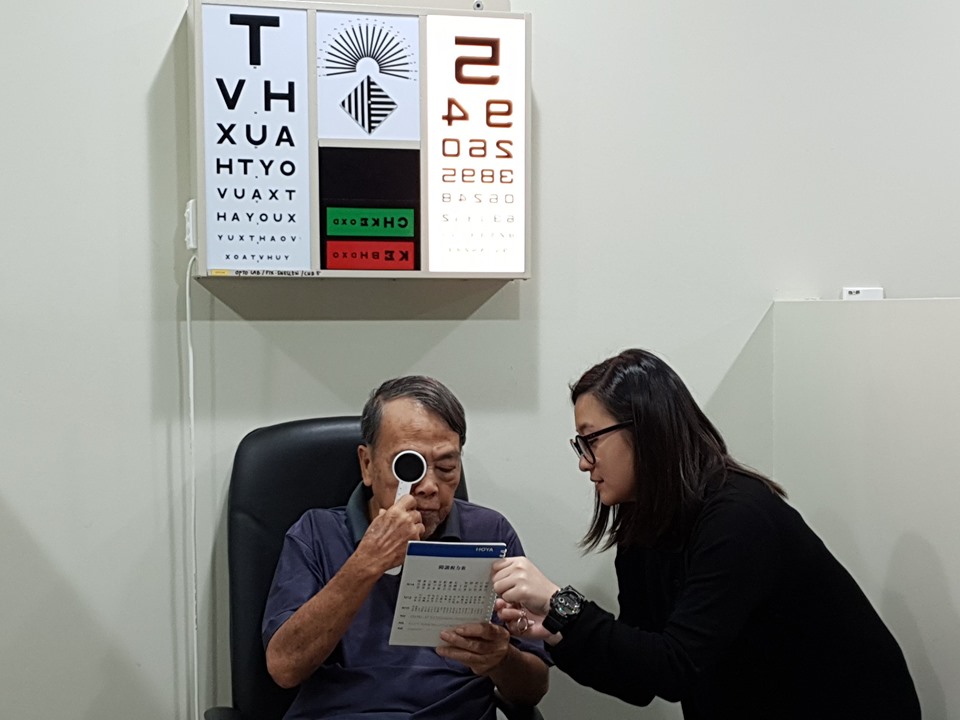
Station 3- Autorefractometer
This station was the only station that can be handled by us, the Y2S1 students. We were in charge of operating the autorefractometer. Autorefractometer is a machine used to determine the refractive error of the eyes. While checking the eye power, the patient was required to fixate their eyes and focus on the image displayed in autorefractometer. Sometimes, the test will become more challenging when the patient’s eyes keep moving (unable to fixate) or the patient is unable to sit in a static position. Hence, it requires a lot of patience from the examiner in order to repeat the test several times until an accurate result is collected.
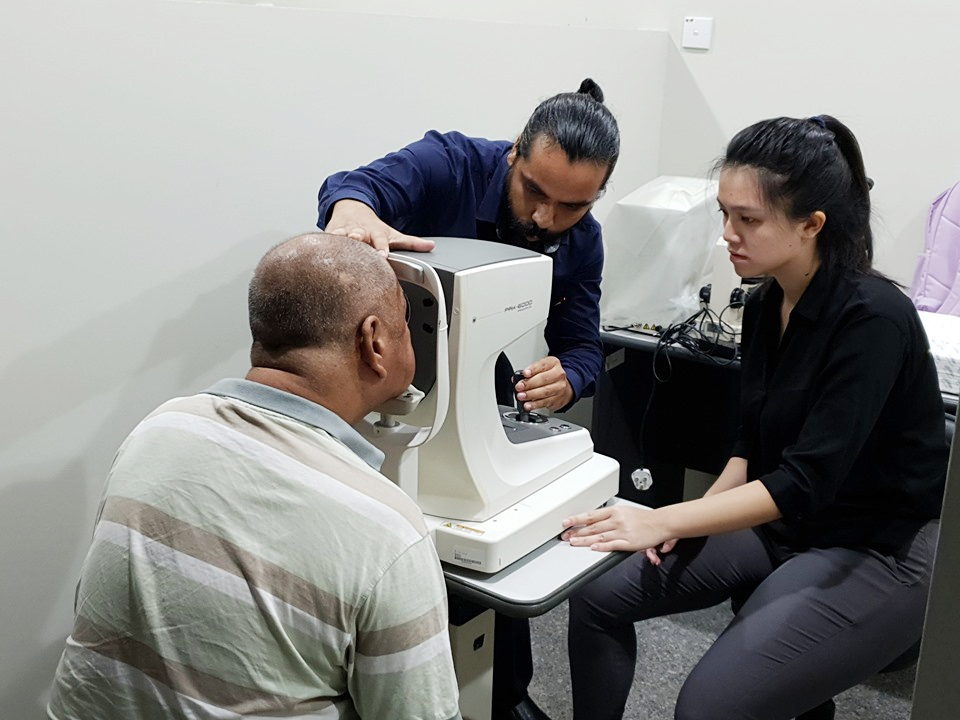
Station 4- Full refraction
After having an estimation of the eye power at station 3, patients were allowed to continue their eye checkup at station 4. At this station, a series of tests was carried out such as subjective refraction, direct ophthalmoscopy, and slit-lamp examination.
Subjective refraction is a significant test in order to prescribe a suitable correcting lenses based on the patient’s response. The patient was required to put on a trial frame while the optometrist fit in several trial lenses according to the patient’s eye power.
Besides, ophthalmoscopy was also done in order to observe the fundus of the eye which consists of the retina, optic disc, and blood vessels by using an ophthalmoscope.
Next, a slit-lamp examination gave the optometrists a closer look at different structures at the front of the eye and inside the eye. It is a key tool in determining the health of the eyes and detecting eye disease.

Subjective refraction test 
Direct ophthalmoscopy 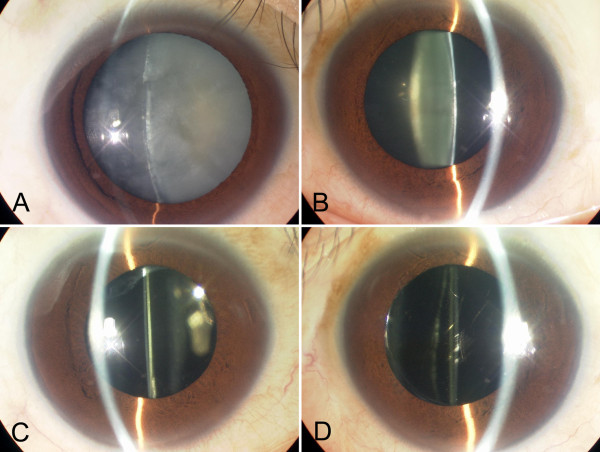
Slit lamp examination
Station 5- Dispensary / Frame selection
At the last station, patients were free to choose the frame of the spectacles they would like to have. The frames provided were in a wide range of designs and also consist of various colors. After choosing the spectacle frame, the eye screening tests for the day were considered as completed. Patients could then have a break at the registration counter while waiting for their bus to arrive.
Through this event, I realized that it is not an easy job to be an optometrist. An optometrist needs not only professional skills, but also patience. Besides, it is important for us to have an eye examination regularly. Some of you may question: “Why should I have an eye checkup since I don’t perceive any pain or blur in my eyes?”
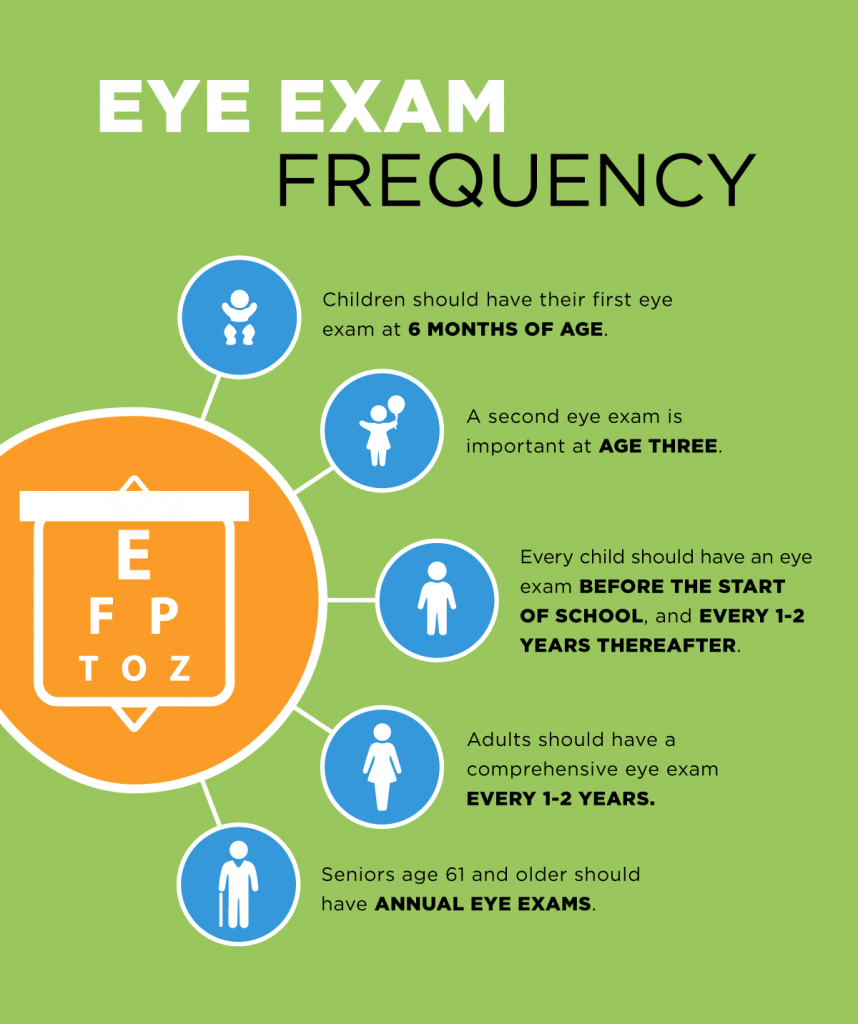
A complete eye screening test includes determining and correcting the refractive errors of eyes, for example, myopia (near-sightedness), hyperopia (far-sightedness), astigmatism, and presbyopia. In fact, eye diseases such as glaucoma, cataracts, macular degeneration and so on can also be detected earlier by having an eye examination.
Hence, annual eye examinations are a significant part of preventive health care. “Jom Jumpa Optometrist” now!


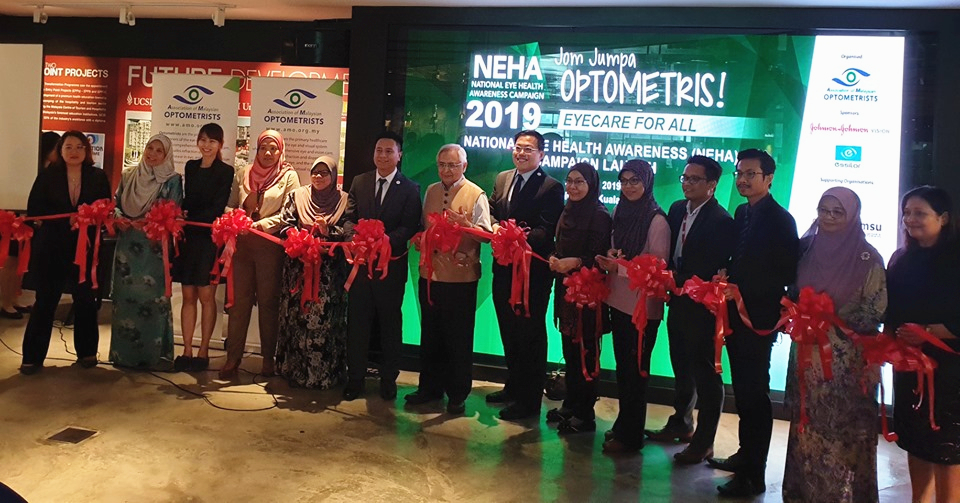
When the upcoming event will held ? regards
Nice post,thanks for sharing
Visit Us